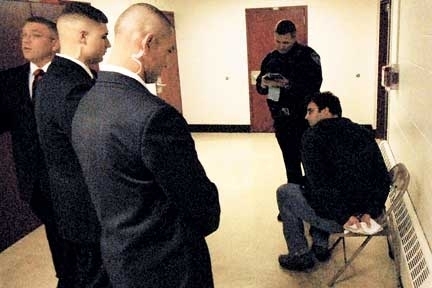Salon
Mike Kamber: Military Censorship — (Update: Winner of POYi Award of Excellence)
Update 2/21/11: We are proud to announce that this audio slideshow, produced for Reading the Pictures (formerly BagNews) by Sandra Roa, has won a Picture of the Year International (POYi) Award of Excellence in the Multimedia Issues Reporting category. Congratulations to Sandra and to Mike.
*****************
Reading the Pictures (formerly BagNews and the BagNewsSalon) is pleased to offer this exclusive audio slideshow interview featuring Michael Kamber, and a focused look at the issue of military censorship, including the photos he’s insisted on being seen.
Michael has been “working around the edges” of the Iraq War since 2003 as a photojournalist for The New York Times. Many of the events that took place during the war were not accessible to him. Some incidents that he was able to witness and photograph were never published. “The reality of the war versus the war that people saw in the newspapers and magazines, it’s a very different reality,” said Kamber.
Making pictures and getting them published have their own set of rules dictated by government, military, publishers and editors. The images made by the photojournalists who covered the war can reveal a gruesome reality beyond what the American media has shown us. “I think that we need to publish those photos for history even if we can’t get them in the newspaper today,” said Kamber.
During embeds with the United States military, Kamber was limited in regards to what he was allowed to photograph. One day during his time embedded, Kamber’s unit was attacked by an IED. After a quick recovery from the debris, Kamber began to photograph but the unit captain yelled out to him “no pictures!” Kamber replied “I’m here to do my job and you can take my cameras later.” The U. S. military later warned The New York Times not to publish the photos and also threatened to revoke the paper’s embed access. Mr. Kamber and his editors dug through the images from that day and tried to conform to the military’s requirements. The graphic images were left unpublished.
Now Kamber is working on an oral history project about access and censorship during the conflict. “I don’t feel that an accurate visual record of the war has really been set forth,” he said. Kamber has interviewed many photojournalists who reported from the Iraq war and they all have stories that shed light on the intricate details that went into defining what the general public was able to see from the conflict. Kamber plans to publish the transcribed interviews with the images that have been kept from our eyes.
— Sandra Roa


Reactions
Comments Powered by Disqus